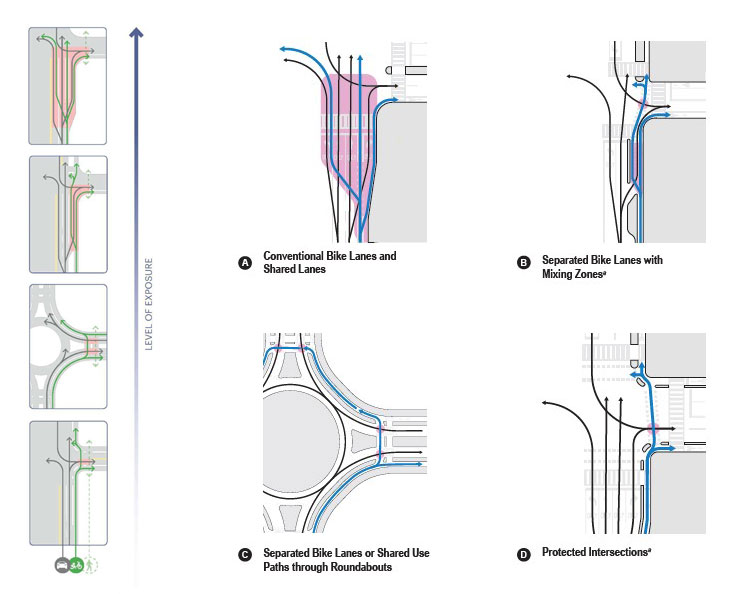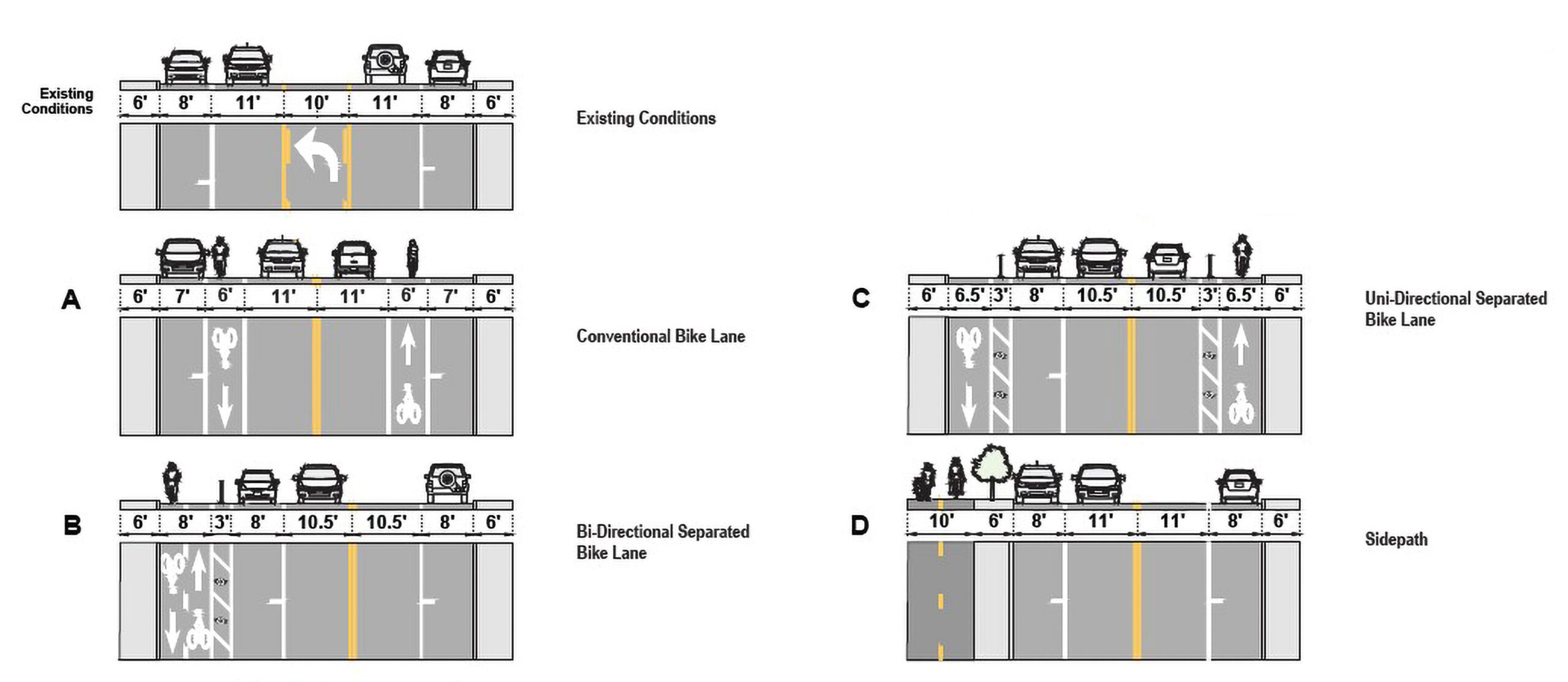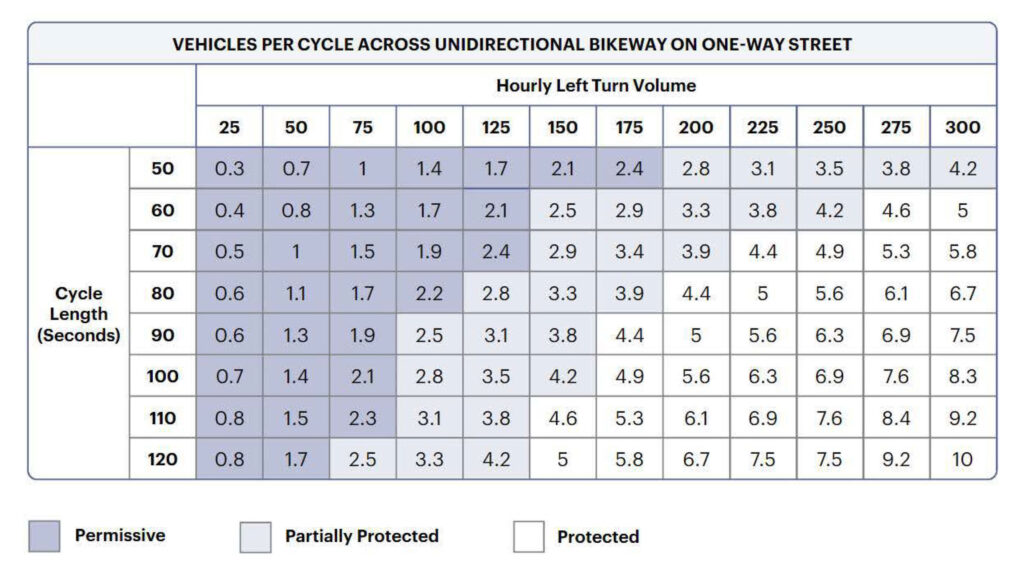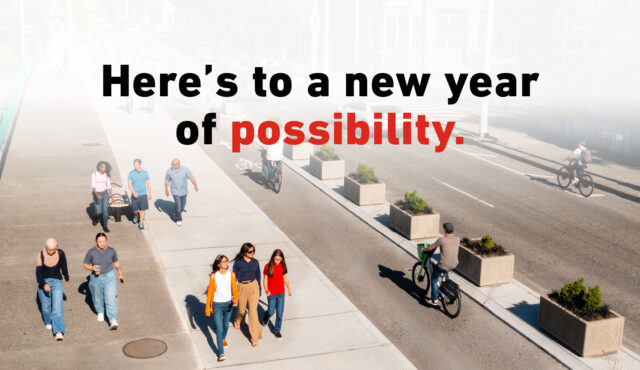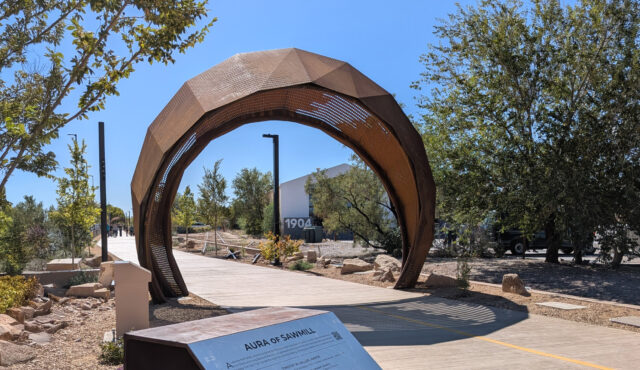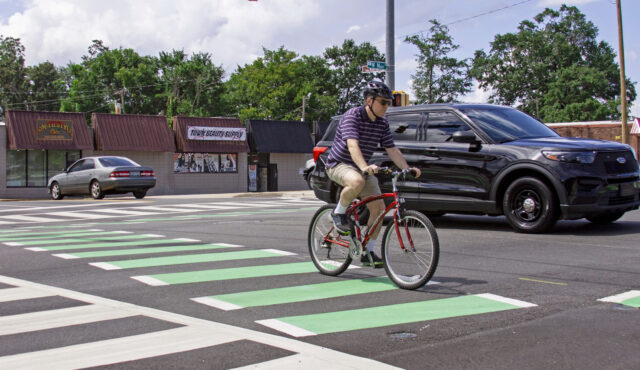This post is authored by Director of Design Bill Schultheiss, Multimodal Design Practice Lead Jeremy Chrzan, and Technical Writer Margaret Krauss.
In December, Toole Design celebrated the publication of the long-anticipated 5th edition of the AASHTO Guide for the Development of Bicycle Facilities, and then January saw the publication of the 3rd edition of the NACTO Urban Bikeway Design Guide. Together, these two guides, as industry-defining resources, represent a shift in the industry toward a unified framework for active transportation infrastructure.
Ideas about best practices for active transportation infrastructure have differed over the past few decades, but now the nation’s leading resources are championing the same visionary ideas. These documents promise to encourage and streamline planning, design, and implementation of bike infrastructure across various environments.
How do the Guides Compare?
Toole Design served as lead author for the AASHTO Bike Guide and provided technical consulting for the NACTO Bike Guide, giving us a unique view of these critical documents and how they came to be.
The AASHTO Bike Guide encompasses bicycling in all contexts and is a primary design resource for roadway design projects funded by local, state, and federal programs. It covers topics such as bikeways at highway and high-speed road intersections (Chapter 11), rural areas (Chapter 12), bridge structures (Chapter 13), and bicycle parking of all types (Chapter 16) — areas less central to the urban-focused NACTO guide. The NACTO Bike Guide is written by cities, for cities, and is intended for application in urban areas. Its guidance reflects the complexities and nuances of designing for city streets and intersections. “They’re in sync, they’re very complementary to each other,” said Bill Schultheiss, our Director of Design and Engineering. “As a designer, I want both of these documents on my desk to make informed design decisions.”
As a designer, I want both of these documents on my desk to make informed design decisions.
Both documents embrace the foundational principle that providing bikeway networks for all ages and abilities is essential. Each design guide equips you with the tools to deliver those networks, providing complementary guidance for:
- Bikeway planning
- Bikeway selection for all ages and abilities
- Bike boulevards
- Protected bike lanes and intersections
- Shared use paths
- Conventional bike lanes
- E-bike, scooter, and power-driven mobility device use of bikeways
A Deeper Dive inside the Guides
Building off the pioneering efforts of the MassDOT Separated Bike Lane Guide, both the AASHTO and NACTO guides include detailed explanations of bicyclist sight distance, vulnerable user exposure considerations in a Safe System design, drainage design, and other design strategies, which will accelerate their adoption throughout the industry and improve design outcomes. Both guides are rich in graphics that help planners and designers explain these key concepts.
The AASHTO Bike Guide provides an extensive coverage of bicyclist sight distances for a wide range of conditions, including crossing bikeways, turning right and left across bikeways, and crossing shared use paths, with supportive explanations to evaluate those conditions, which is not covered in the NACTO Bike Guide. In designing protected intersections, both guides provide essential strategies that focus on safety, but some rationales differ, such as the establishment of no parking areas on the approach and the setback distances for the bikeway.
For those seeking to understand the research and safety basis for bikeway improvements, Chapter 2 of the AASHTO Bike Guide provides a comprehensive overview of bicyclists’ operation and safety, which is supported by 80 references. The content includes a detailed review of crash types and bicyclist fatality data for urban and rural areas. It also discusses the operational and behavior needs of children, teens, adults, older adults, and people with disabilities, providing recommendations to improve their comfort and safety while bicycling.
Both documents provide guidance for selecting a preferred bikeway to serve all ages and abilities. Chapter 4 of the AASHTO Bike Guide enriches this with strategies to help designers approach traffic analysis, optimize roadway space, and evaluate safety and operations tradeoffs — critical aspects of bikeway implementation. The guidance includes the following example to help readers understand the tradeoffs between bikeway types when retrofitting existing roadways.
Both documents provide guidance on signal timing and the use of bike signals, including considerations for when to implement protected phases. The NACTO Bike Guide expands upon the AASHTO hourly volume guidance by providing additional considerations for cycle length and partially protected phasing.
Taken together, these guides will help your community plan, design, and build active transportation facilities that will meet your communities’ goals. We look forward to working with you to accomplish them.
Interested in learning more about the AASHTO Bike Guide and how to put it into practice? Contact Jeremy Chrzan, Toole Design’s Multimodal Design Practice Lead, to discuss your community’s needs.
